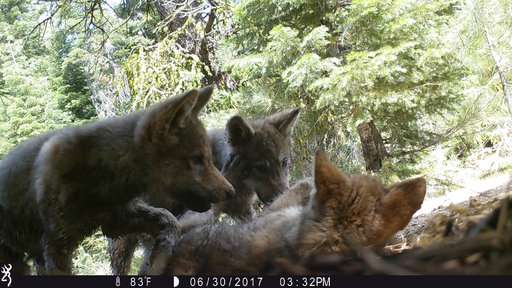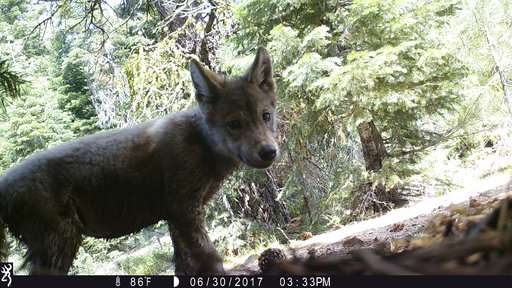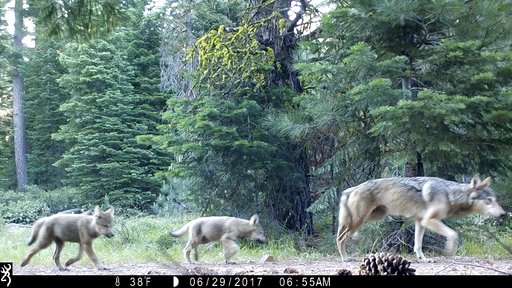Second pack of gray wolves spotted in Northern California

A female gray wolf, her mate and at least three pups are the second pack of wolves spotted in Northern California since the species went extinct there in 1924, state wildlife officials said Wednesday.
The gray pups were born this spring in Lassen National Forest to a female wolf of unknown origins. Her mate is the son of OR7, a wolf with a tracking device that was the first of its kind in almost a century to migrate into California from Oregon, the Department of Fish and Wildlife said.
Biologists began surveying the Lassen National Forest area in May after they found evidence of wolf presence.
On June 30, they captured the 75-pound female gray wolf and fitted her with a tracking collar. An examination revealed she had recently given birth to pups.
A day later, Department of Fish and Wildlife biologists returned to the area for a follow-up check on the female and found that a nearby trail camera operated by the United States Forest Service had captured photos of the mother and pups. The gray pups were also photographed playing in front of the camera.
While most of the pack's known activity to date has been in western Lassen County, which is near the eastern state line, some tracks have also been confirmed in Plumas County, officials said.

These wolves, named the Lassen Pack by the U.S. Forest Service employee who first detected their location, are the second pack of gray wolves known to be in California since they were killed off in the 1920s, officials said.
The first confirmed breeding pair in California produced five pups in Siskiyou County in 2015. The family of seven gray wolves, known as the Shasta Pack, hasn't been spotted since May 2016, although one of the pups was detected in northwestern Nevada in November 2016, the department said.
State officials in 2014 granted the wolf protections under the state's endangered species act, despite opposition from hunting and livestock groups who fear the predator will kill deer and valuable cattle. Under California's protections, gray wolves can't be killed or hunted.
They are also listed as endangered by the federal government.

© 2017 The Associated Press. All rights reserved.
















